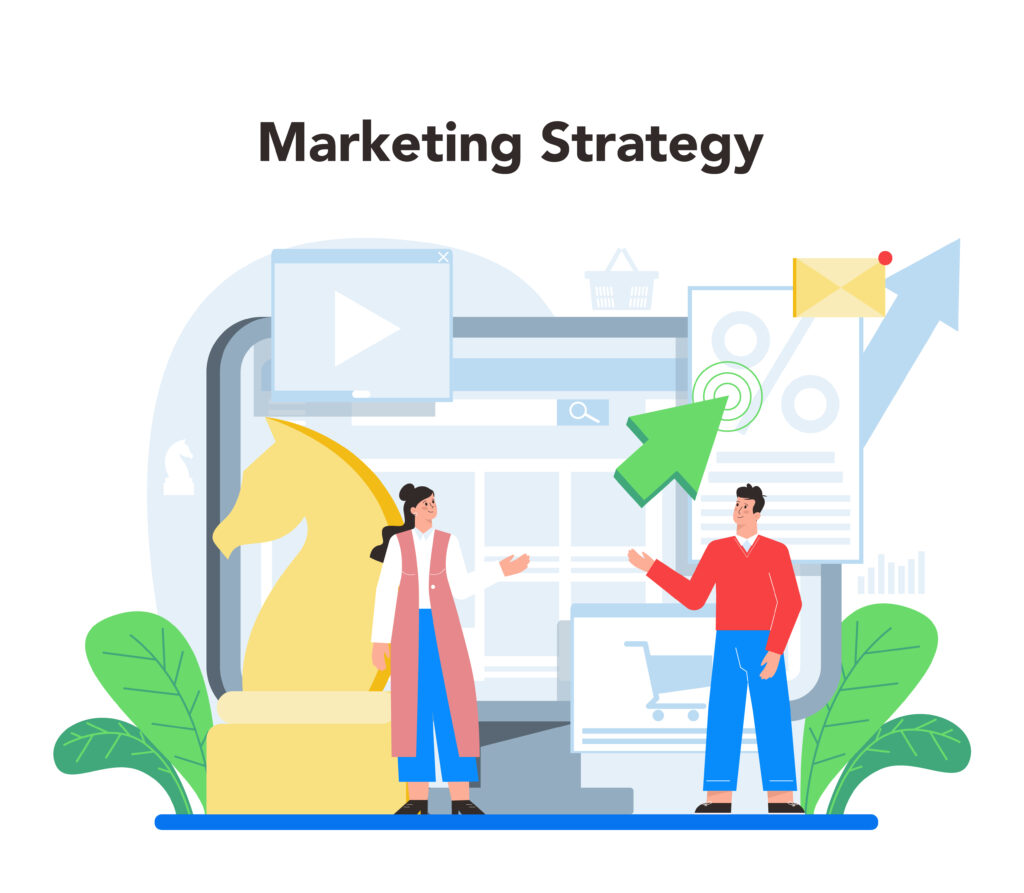
Key Takeaways
- E-commerce marketing is a crucial aspect of any online business, and it involves using various digital marketing channels to attract and convert potential customers.
- E-commerce marketing requires a deep understanding of the target audience, the product or service being sold, and the digital channels used to reach and engage potential customers.
- Effective e-commerce marketing strategies include optimizing product pages, leveraging social media, email marketing, paid advertising, offering promotions and discounts, and focusing on customer experience to create a seamless customer journey.
Introduction
Welcome to the world of e-commerce Marketing!
In today’s digital age, a successful online business requires more than a great product or service.
You must implement effective e-commerce marketing strategies that drive sales and conversions to truly thrive.
Whether you’re just starting or looking to take your online business to the next level, having a solid understanding of the latest e-commerce marketing strategies and trends is essential.
This blog will provide several examples of successful e-commerce marketing strategies by discussing what marketing is, what e-commerce marketing is, key principles & future of e-commerce marketing.
What is marketing?
Marketing is a crucial aspect of any business or organization that aims to promote and sell its products or services to potential customers.
It involves a series of activities that help identify, understand, and meet the needs and wants of target audiences.
To create effective marketing strategies, marketing professionals use various tools and techniques to analyze consumer behavior, preferences, and trends.
The marketing process begins with market research to understand the market, identify target audiences, and evaluate competitors.
This information is used to develop a unique value proposition and brand messaging that sets the business apart from competitors.
Marketing tactics such as advertising, public relations, sales skills, sales promotions, and content marketing are implemented to reach and persuade potential customers.
Effective marketing involves ongoing analysis and adjustment based on customer feedback and behavior.
Ultimately, marketing aims to generate leads, increase brand awareness, and drive sales by delivering value to potential customers.
What is E-commerce marketing?
E-commerce marketing refers to the strategies used to promote and sell products or services online.
It involves using various digital marketing channels to attract and convert potential customers into paying customers.
E-commerce marketing is a vital aspect of any online business, as it allows businesses to reach a broader audience and increase sales.
E-commerce marketing includes a range of tactics, such as search engine optimization (SEO), pay-per-click (PPC) advertising, email marketing, social media marketing, content marketing, and affiliate marketing.
These tactics are designed to drive traffic to e-commerce websites, improve website visibility, and increase conversion rates.
One of the primary goals of e-commerce marketing is to improve customer experience from the moment a potential customer lands on the website to the point of purchase, as e-commerce link building also plays an essential role in e-commerce marketing.
This involves optimizing the website for a smooth user experience, providing relevant and valuable product information, and offering various payment options.
Overall, e-commerce marketing requires a deep understanding of the target audience, the product or service being sold, and the digital channels used to reach and engage potential customers.
What are the key principles of E-commerce marketing?
E-commerce marketing is a constantly evolving field, but some fundamental principles remain critical to success.
Here are some of the key principles of e-commerce marketing:
Customer-centric approach
E-commerce marketing needs to be customer-centric, focusing on the needs, preferences, and behaviors of the target audience.
This means understanding their pain points, motivations, and buying habits to create a seamless customer journey.
Data-driven decision-making
E-commerce marketing requires analyzing data from various sources to make informed decisions.
This includes website analytics, customer feedback, and sales data to optimize marketing efforts and improve the user experience.
Multi-channel optimization
E-commerce marketing must be optimized for various digital channels, including search engines, social media, email, and mobile.
Each channel requires a different strategy and approach to maximize engagement and conversion rates.
With no-code development tools, launching multi-channel marketing campaigns is as easy as never before.
For example, Bubble development services allow you to optimize your store for search engines as well as implement various data collection and lead generation features without writing any line of code.
Personalization
Personalization is critical to e-commerce marketing, as it helps build a strong relationship between the brand and the customer.
This can be achieved through personalized product recommendations, targeted email campaigns, and tailored content.
Continuous testing and improvement
E-commerce marketing requires continuous testing and experimentation to optimize and improve results.
This includes A/B testing, user testing, and ongoing data analysis to identify improvement areas.
E-commerce Marketing Strategy

Here are some strategies to use e-commerce marketing effectively:
Optimize product pages
Product pages are the most critical pages on an e-commerce website.
Optimize them for search engines and user experience, including high-quality images, product descriptions, and customer reviews.
Use social media
Leveraging social media platforms are a great way to reach a broader audience and engage with potential customers.
Use them to showcase products, run contests, and offer promotions.
Leverage email marketing
Email marketing is an effective way to nurture relationships with leads and customers.
You can use targeted emails to promote products, offer discounts, and share helpful content , while staying updated with current email marketing trends to ensure your strategies remain relevant and impactful.
Use paid advertising
Paid advertising is a great way to reach a larger audience quickly.
With the help of PPC advertising, display ads, and social media ads to drive traffic to your website.
Offer promotions and discounts
Offering promotions and discounts can be an effective way to drive sales and increase customer loyalty.
Use them strategically to incentivize purchases and build a sense of urgency.
Focus on customer experience
A seamless customer experience is essential for driving sales and conversions.
Optimize the website for easy navigation, fast loading times, and simple checkout processes.
Upselling and cross-selling
Upselling and cross-selling can be effective ways to increase the average order value.
Offer related or complementary products that customers may be interested in, encouraging them to purchase more.
For example, if you sell fighting equipment, you can always upsell gloves for fighters, shin guards, jumping ropes, etc.
Abandoned cart recovery
Abandoned cart recovery emails can be a powerful tool to recover lost sales.
Send personalized emails reminding customers of their abandoned cart and offering a discount or promotion to incentivize them to complete the purchase.
Personalization
Personalization can build stronger relationships with customers and increase their loyalty.
Use data to personalize the shopping experience, such as personalized product recommendations or targeted email campaigns.
Retargeting
Retargeting can be an effective way to bring back customers who have previously visited the website but didn’t purchase.
Use retargeting ads on social media or search engines to remind them of the product and offer a discount or promotion.
User-generated content
User-generated content, such as customer reviews or social media posts, can be a powerful tool to increase sales and conversions.
Use them strategically to build social proof and encourage customers to make a purchase.
By implementing these e-commerce marketing tactics, businesses can increase sales and conversions, build customer loyalty, and grow their online presence.
The Future of E-commerce Marketing
The future of e-commerce marketing is rapidly evolving as technology advances and consumer behavior changes.
Here are some trends that could shape the future of e-commerce marketing:
Increased adoption of AI and machine learning
AI and machine learning can help personalize the shopping experience, improve product recommendations, or automate marketing campaigns.
With AI tools and presentations, businesses can understand customers deeply and design persuasive presentations for improved conversions.
Additionally, a diverse array of AI writing tools, such as Humbot, can enrich your eCommerce platform by generating distinctive page content designed to optimize search engine optimization (SEO) rankings.
Rise of voice search
With the increasing use of smart speakers and virtual assistants, voice search is becoming more prevalent.
E-commerce businesses need to optimize their websites and product listings for voice search to remain competitive.
Emphasis on sustainability
Consumers are becoming more environmentally conscious, and e-commerce businesses need to prioritize sustainability in their marketing efforts.
Augmented reality and virtual reality
AR and VR can provide a more immersive shopping experience and enable customers to visualize products before purchasing.
Increased focus on customer experience
As competition in the e-commerce industry grows, businesses must prioritize the customer experience to differentiate themselves.
Personalization, fast shipping, and easy returns are becoming the norm.
How to Generate Leads Using E-commerce Marketing?
E-commerce businesses can generate leads using various marketing tactics. Here are some effective ways to generate leads:
1. Use social media advertising to target potential customers with relevant offers and promotions.
2. Use email marketing to capture leads and nurture them through targeted campaigns.
3. Offer gated content, such as e-books or whitepapers, in exchange for contact information.
4. Implement exit-intent popups to capture leads before they leave the website.
5. Use retargeting ads to bring back potential customers who have previously visited the website but didn’t purchase.
By implementing these tactics, e-commerce businesses can generate leads and build a pipeline of potential customers to nurture and convert into paying customers.
Conclusion
In conclusion, e-commerce marketing is vital for driving sales and conversions online.
Businesses can improve their online presence and attract more customers by implementing effective strategies such as optimizing website design, utilizing targeted advertising, and leveraging email marketing.
Additionally, by providing a seamless and personalized shopping experience, businesses can build customer loyalty and increase repeat purchases.
As the e-commerce industry evolves, businesses must adapt to changing consumer behavior and utilize emerging technologies to stay ahead of the competition.
Overall, e-commerce marketing is a constantly evolving field that requires businesses to stay agile and innovative to succeed in the long term.
